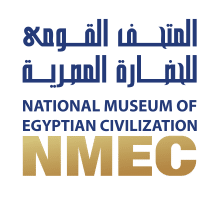

Anoxia is a condition characterized by a relative or total lack of oxygen. Insects are major threats to museum objects. In recent years, safer control methods in museums have become increasingly necessary to avoid risks to artifacts. Anoxic disinfection is more widely used in museums. It is a free method to control insect pests and has no risks for the work of art.
The anoxic kill of insects in the museum’s objects takes place by oxygen deprivation and replacing it with nitrogen gas. Nitrogen is an inert gas; it is totally non-reactive with any substance in a collection of museum objects. The anoxia treatment system consists of accessories of liquid nitrogen source, nitrogen humidifier, and oxygen monitor.
The method is simple and can be modified according to the specific needs of the museum, for example, the size and number of objects, their varied humidity requirements, and the frequency of recurrent infestation.
The National Museum of Egyptian Civilization is the only place that has a complete anoxia unit for sterilization and pest control. The unit includes a large room and two small compartments that are used to pump nitrogen for smaller objects. In addition to a portable machine that can be used inside or outside the NMEC. There is a similar unit at the Louvre Museum in France.
